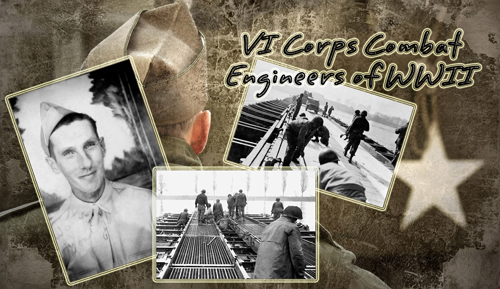Hi Gary, i`ll try to answer your question as best as i can explain it.
We must look at the US Army in WWII as having 2 separate parts, each part with their own command structure.
First is the Army Ground Force which are the fighting troops, with the basic field command structure of: Army Group> Army> Corps> Division.
The second part is the Army Service Force which supplied the fighting forces, conducted the advanced training of units, ran the replacement depots, handled the transfer of units to the front, ran the prisoner of war system and just about everything else in support of the fighting troops. It was a massive organization spanning from the factories in the US to the front lines.
To supply the front line troops, the Service Of Suppy established Base Sections as soon as invasion troops secured & expanded a beachead.
Under the Base Section Command were command sections for the various services as shown below.
Typical Base Section setup by the Service of Supply:
Command Section
G-1 Section G-3 Section
G-2 Section G-4 Section
Adjutant General Headquarters Command
Air Force Liaison Inspector General
Army Exchange Service Judge Advocate General
Base Censor Medical Section
Base Purchasing Agent Miscellaneous Supply section
Chaplain Ordnance Service
Chemical Warfare Service Passive Air Defense
Civil Affairs Provost Marshal
Claims Commission Quartermaster
Engineer Service Signal service
Finance Officer Special Service
Transportation Service
In North Africa, there were 3 Base Sections - Atlantic Base Section (ABS) at Casablanca, Mediteranean Base Section ( MBS) in Algeria covering Oran & Azrew, And Eastern Base Section in Tunisia covering the ports of Bizerte & Tunis.
In Sicily it was the was the Island Base Section.
In Italy it was the Peninsular Base Section (PBS) in Naples.
In Southern France there was the Delta Base Section and Continental Base Section.
Now taking the 705th as an example, We know they were in North Africa before moving to Italy.
( note: this is not to be taken as an actual history of the unit, it is only to show usual movements and assignments or attachment to different commands for similar units.)
The usual arrival port for new units was Oran, Algeria and MBS operated most of the training centers, so i`ll use this for the example.
If the 705th arrived at Oran, they would have been assigned/attached to the Engineer Service Section of MBS who would equip and supply the unit, provided housing area, assigned them to the training centers etc.
When they were ready they would be relieved of attachment, Engineer Service Section MBS, move to a staging area in Tunisa and assigned/attached to the Engineer Service Section, Eastern Base Section. Here they would be equiped with they would need when they got to Italy. & prepared for embarkation on their ship.
When they arrived in Naples, they were assigned/attached to the Engineer Service Section, Peninsular Base Section.
Engineer Service Section, PBS was the command that attached the 705th to the 696th Engineer Petroleum Distribution Co.
If / when they were relieved of attachment the the 696th, they would revert to command & control of the Engineer Service Section, PBS. for their next assignment.
For all of their time in Italy, Engineer Service Section, PBS. was the higher
Command that ordered their assignments & attachments.
As you can see, such units were never under command of any Army Group> Army> Corps> Division. Almost every unit arriving in a theater of operation, even those going to fighting units always passed thru the Base Sections for attachment. Units such as an Engineer General Service Regiment would be attached to an Army corps for a period of time and when no longer needed in the corps area would be rel`vd & revert to command control of the base section.




